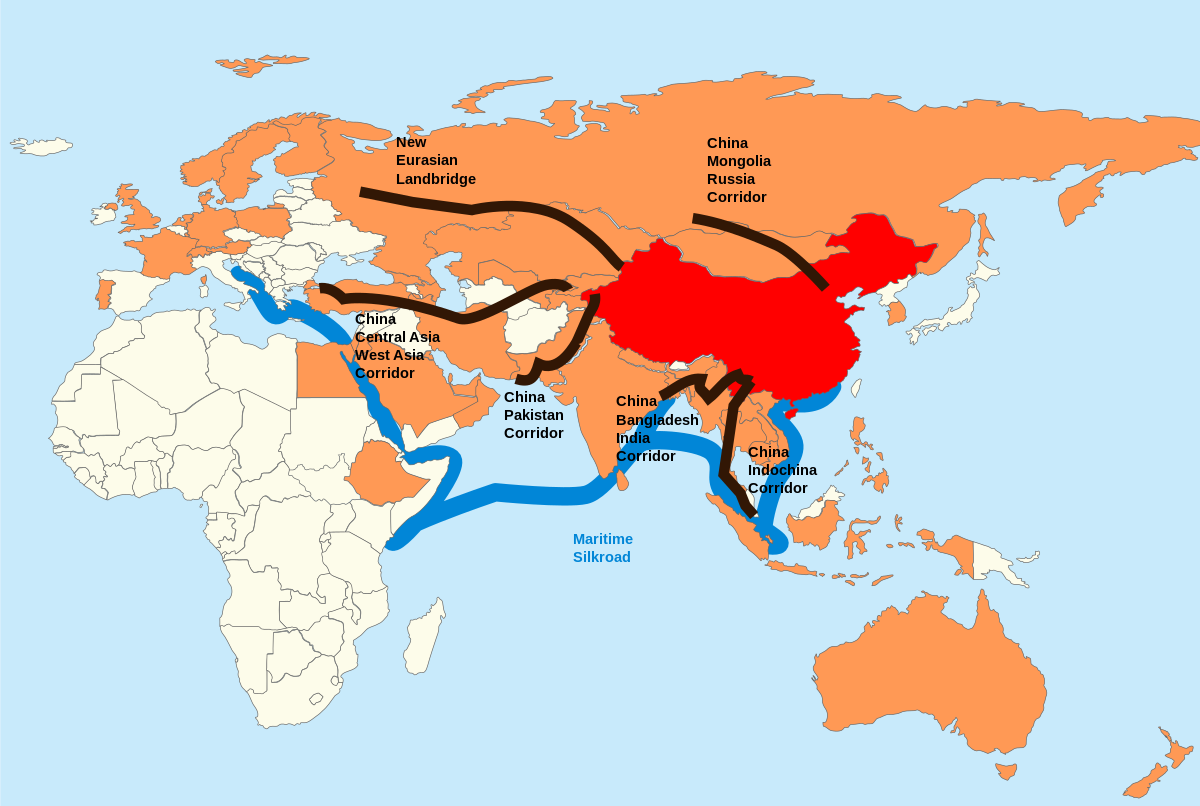The inaugural meeting of the Blue Dot Network’s executive consultation group (ECG) was held recently, signaling a shift towards reviving the two-year-old US-led initiative.
- Despite World’s Biggest Navy, Why China Will Struggle To Match Indian, American Submarines In The Indo-Pacific?
- France Likely To Partner India In Developing Six Nuclear-Powered Attack Submarines
Experts argue that India might be interested in joining the Blue Dot network to counter Xi Jinping’s ambitious Belt and Road Initiative (BRI).
According to a press release by US State Department, more than 180 representatives participated and discussed “ideas on how the Blue Dot Network (BDN) initiative could help close the global infrastructure gap and create high standard, sustainable infrastructure in emerging markets”.
What is Blue Dot Network?
The Blue Dot Network first came to public light at the Indo-Pacific Business Forum in Bangkok during the 35th ASEAN summit in 2019 hosted by Thailand.
US’ International Development Finance Corporation (DFC) along with the Japanese Bank for International Cooperation and Australia’s Department of Foreign Affairs and Trade launched an infrastructure initiative to “boost transparency and sustainability”.
Dubbed the “Michelin Star” for infrastructural projects, the Blue Dot Network aims to promote “high quality, trusted standards for global infrastructure development” by engaging governments, the private sector, and civil society.
The participating members will approve such projects that qualify standards of excellence put up by the network keeping in mind global principles.
What is the Blue Dot Network, what does it hope to accomplish, and what challenges does it face? @CSIS experts @MPGoodman88, @danrunde, and @HillmanJE explain the potential of the BDN: https://t.co/fRDkOna7Z1. pic.twitter.com/y44vY1pygx
— Reconnecting Asia (@ReconAsia) March 18, 2020
At the core of the project lies the development of a certification mechanism to identify and distinguish “quality infrastructure projects that demonstrate and uphold robust standards for development”.
This certificate will act as proof of “quality assurance” and further promote private investments.
Organization for Economic Cooperation and Development (OECD), an intergovernmental body with 38 member countries, is the technical partner of the BDN.
Counter To China’s BRI?
Since the launch of Chinese President Xi Jinping’s ambitious BRI in 2013, investments related to infrastructure and development have been taking shape as geopolitical gains.

Through a US$ 1 trillion-plus transcontinental project, China has made inroads into 138 low and middle-income economies along with bringing 29 international organizations on board.
According to the 2020 BRI Investment Report, last year alone, China invested close to US$47 billion around the world, almost 54% lesser than 2019 owing to pandemic-induced challenges.
On the other hand, US-led Blue Dot Network aims to cover almost a $2.5-3.5-trillion investment gap in the projects related to the developing economies.
- At €7.8B, Why Indian Rafale Jets Are ‘Double The Cost’ Than Egyptian Rafales?
- Why Did Netizens ‘Mock’ Nigeria For Importing JF-17 Fighter Jets From Pakistan?
The US has been critical of Beijing’s “charm offensive” strategy since its inception and has been proactive in reaching out to friendly states in the Indo-Pacific and beyond.
Launched as a part of the Indo-Pacific strategy, the Biden administration looks to engage with the regional allies including India which has rejected China’s BRI and is currently involved in a standoff with its neighbor.
Exploring the QUAD-Plus framework could be an option to bring long-term allies such as South Korea, New Zealand, and Indonesia on board in order to contain China’s rising influence in the region.
The US Senate recently passed industrial policy legislation to enhance the country’s investments in cutting-edge technology and launched a “supply chain trade strike force” to counter its competitor in trade and investment politics.
Should India Be Part Of Blue Dot Network?
According to analysts, the Blue Dot Network could offer a unique opportunity to India in the post-Galwan Valley scenario. New Delhi, which had largely positioned itself as an anti-BRI nation, could find the US-led initiative attractive and in sync with the QUAD concept, argues Dr. Jagannath P. Panda, a research fellow at Manohar Parrikar Institute for Defence Studies and Analyses, New Delhi.
India opposes BRI as it not only overlooks the “sovereignty and territorial integrity” of other countries but also ignores universally guided norms that ensure “openness” and “equality” in the region, he says.
“BDN’s main feature is that it follows a project-based investment approach rather than the country-based engagement that the BRI conducts, which has promoted debt traps,” Panda, wrote in a feature titled, ‘India, the Blue Dot Network, and the “Quad Plus” Calculus’.
The first meeting of the BDN executive consultation group is a positive sign in moving ahead with the process of global certification and has the potential to develop into a strategy that counters China’s neocolonial ambitions.
What shape will the network take depends upon its expansionary process and the efforts put by the Biden administration to prevent it from going dormant again.
Written by Apoorva Jain
READ MORE
- Watch: The Ultimate Dogfight Between US & Russian Fighter Jets Over A ‘Top-Secret’ Air Base In Nevada
- Why India’s Ladakh Region Is Crucial For China’s Rise As An Economic Super-Power?
- 30 Times Faster Than Speed Of Sound: Is China Really Winning The Hypersonic Race With Its JF-22 Wind Tunnel?